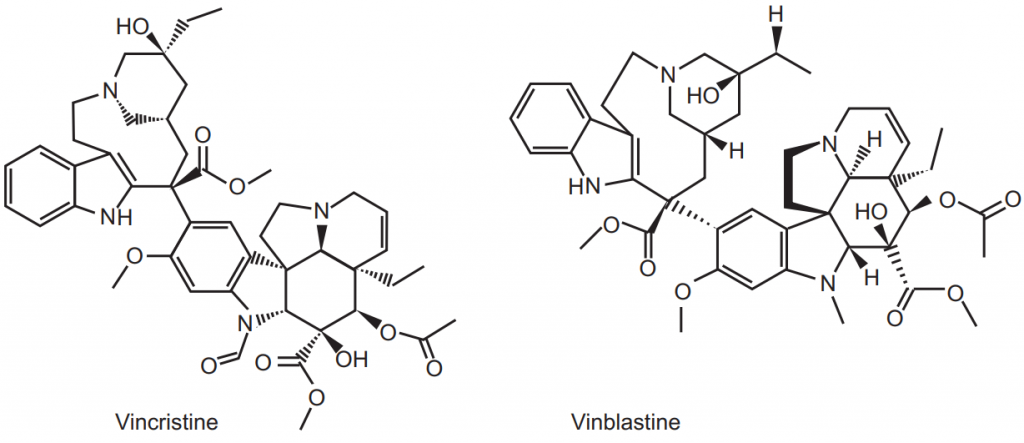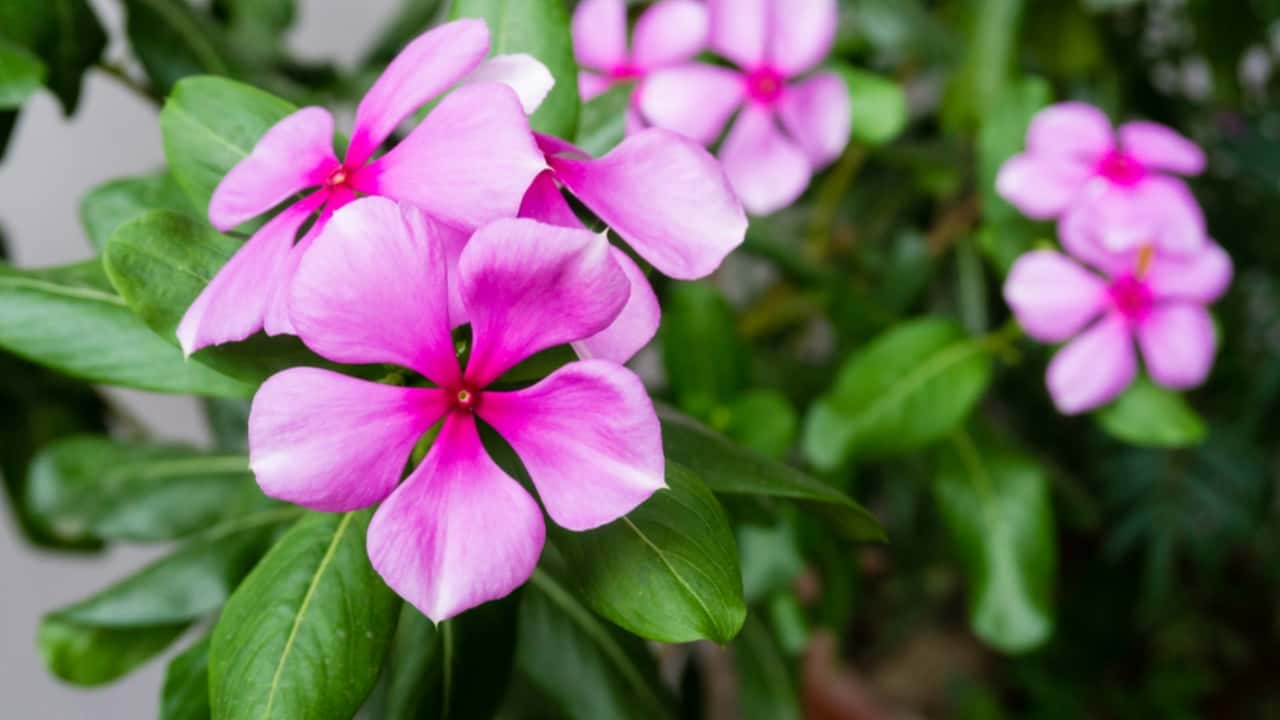Vincristine and vinblastine are important alkaloidal phytoconstituents isolated from the plant of Vinca (Catharanthus roseus L, Family Apocynaceae) which is an erect herb or sub herb everblooming plant with 40-80 cm height. The flower may be white, violet or rose in colour. The alkaloids isolated from the vinca plant are generally referred to as Vinca alkaloids. The root may contain more amounts of alkaloids (0.15-1.795 per cent). More than 100 alkaloids of the indole group are present in the plant of which 25 are dimeric. Vincristine and vinblastine are also dimeric and uses for the treatment of human neoplasm.


Extraction and Semisynthesis of Vinblastine
Table of Contents
Dry leaf powder of the Vinca was extracted with 0.1M HCl for half an hour in an ultrasonic bath, centrifuge the mixture for 10 minutes at 2000 rpm. Obtained sediment is re-extracted with more quantity of HCl. Mix both supernatant and filter it. Treat this filtrate with petroleum ether to remove lipophilic compound and chlorophyll. Separate the acidic fraction and treat it with an alkaline solution (pH 10.5) of 10 per cent in embonic acid add slowly for the precipitate of alkaloid. Increase the pH up to 5.0. separate the precipitate with decantation and this precipitate can be used for the semisynthesis of vinblastine.
Mix this precipitate with 0.1M HCl and 0.1 M Citric acid and cool the mixture from 0 to – 5°C using dichloromethane and ice bath. Slowly add 30 per cent aqueous hydrogen peroxide, 10 per cent aqueous sodium hypochlorite, and 1 per cent solution of sodium borohydride in methanol for three to five hours. Increase the pH of the mixture up to 9.5, collect the organic layer stepwise and dry it.
Production of Vincristine Sulphate
Dried homogenous ground material treated with dilute tartaric acid was extracted with benzene. Concentrate the benzene extract and perform the steam distillation. The benzene will be separated as distillate and the residue will be left out. Dissolve the residue in methanol and treat it with a dilute tartaric acid solution. Perform the distillation. The methanol will separate as distillate and treat the bottom product with a dilute solution of ammonia. Extract it and then evaporate the extract to dryness. Dissolve the dry powder and separate the vincristine sulphate by the chromatographic method by using alumina column and eluted with benzene, benzene + chloroform, chloroform and chloroform + methanol. Vincristine will be isolated and treated with sulphuric acid, vincristine sulphate will be obtained.
Estimation
Vincristine and vinblastine sulphate is estimated with the help of HPLC. The following solution is prepared for the estimation:
Solution 1: 0.1 per cent w/v of the substance being examined.
Solution 2: Contain 0.2 per cent w/v each of vinblastine sulphate RS and vincristine sulphate RS solution.
Solution 3, 4 and 5: 0.1 percent w/v, 0.002 percent w/v and 0.0001 w/v respectively of vinblastine sulphate (if vinblastine estimated) or vincristin sulphate (if vincristin sulphate estimated).
Column: Packed with stationary phase LC2.
Flow rate: 1.0 ml/min.
Mobile phase: (For vinblastine) Mixture of 70 volume of methanol 30 volume of 1.5 per cent w/v of diethylamine (pH adjusted 7.5 with phosphoric acid).
Detection wavelength: (For vinblastine sulphate) 297 nm.
Mobile phase: (For vincristine sulphate) Mixture of 50 volumes of methanol 38 volumes of 1.5 per cent w/v of diethylamine (pH adjusted 7.5 with phosphoric acid) 12 volumes of acetonitrile.
Detection wavelength: (For vincristine sulphate) 262 nm.
Utilization
Vinblastine sulphate should be stored in the refrigerator otherwise it may be unstable. It is available in sealed ampoules. The vinblastine sulphate is highly used in the treatment of neoplasm, lymphocytic lymphoma, Hodgkin’s disease, testicular carcinoma. Vinblastine can show its potency in its form but generally, it is dispensed in a combination of other drugs to improve its therapeutic efficacy. It is dispensed through intravenous route by considering other factors like body surface, patient age, WBC count etc.
Vincristine sulphate is also available in the ampoule and stored in the refrigerator to improve its stability. It is also useful in lymphosarcoma, small cell lung cancer, neuroblastoma, Hodgkin’s disease, cervical and breast cancer. These alkaloids show antimitotic activity which inhibits cell growth. They disrupt the microtubules which cause the dissolution of cell mitotic spindle and the growth of cell arrest in metaphase.
Make sure you also check our other amazing Article on : Sennoside
